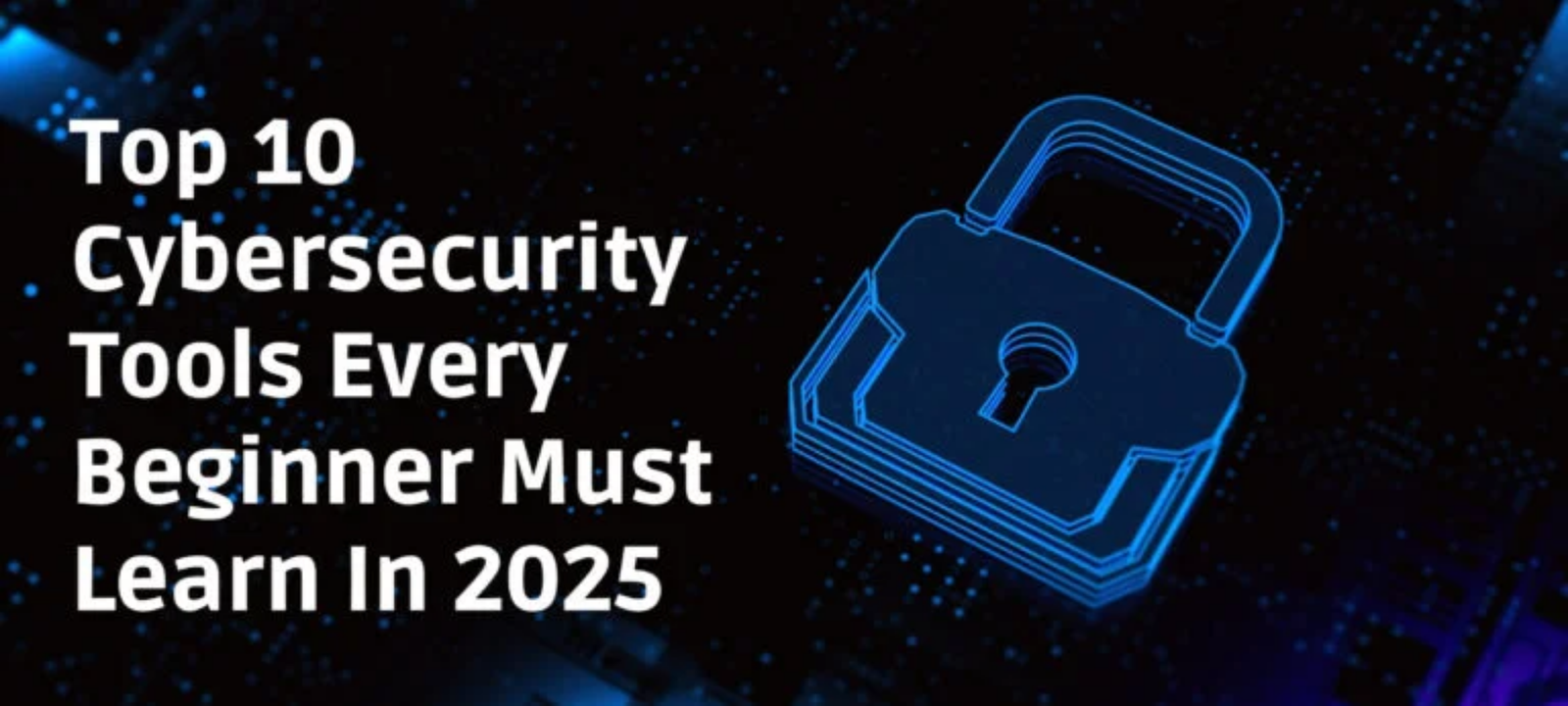Top 10 Cybersecurity Tools Every Beginner Must Learn in 2025
Introduction
As cyber threats grow more sophisticated, cybersecurity professionals must stay equipped with the right tools to defend against attacks, detect vulnerabilities, and analyze breaches. For beginners entering the field in 2025, learning these tools early can significantly boost both skills and confidence.
This blog introduces the top 10 essential cybersecurity tools that every beginner should learn—covering their purpose, key features, and how to start using them. Whether you’re setting up your first home lab or preparing for your first security analyst role, these tools form the backbone of hands-on cybersecurity work.
1. Wireshark – Network Traffic Analyzer
What it does:
Wireshark captures and analyzes network traffic in real-time. It’s widely used to diagnose network issues and detect suspicious activity.
Why it’s essential:
Understanding network protocols and traffic patterns is fundamental for cybersecurity. Wireshark helps visualize how data moves, making it easier to spot anomalies.
Beginner Tip:
Start by capturing traffic on your local network and identifying protocols like HTTP, DNS, and TCP handshakes.
2. Nmap – Network Mapper and Port Scanner
What it does:
Nmap scans networks to discover devices, open ports, and running services.
Why it’s essential:
Knowing what services are running on a target system is the first step in identifying vulnerabilities. Nmap is critical for both defense and ethical hacking.
Beginner Tip:
Use nmap -sS [target IP] for a simple stealth scan to see open ports.
3. Metasploit Framework – Penetration Testing Platform
What it does:
Metasploit allows you to simulate real-world attacks to test system vulnerabilities.
Why it’s essential:
It’s one of the most powerful tools for penetration testing, useful for ethical hackers and red teamers.
Beginner Tip:
Practice on virtual machines using Metasploitable or DVWA in a controlled environment.
4. Kali Linux – Penetration Testing Operating System
What it does:
Kali Linux is a Debian-based distro packed with hundreds of pre-installed cybersecurity tools.
Why it’s essential:
Kali is the go-to OS for ethical hackers, digital forensics professionals, and security researchers.
Beginner Tip:
Install Kali on a virtual machine and explore tools like Nmap, Burp Suite, and Hydra.
5. Burp Suite – Web Application Security Testing
What it does:
Burp Suite is used for scanning and exploiting vulnerabilities in web applications.
Why it’s essential:
With the rise in web-based attacks (like SQL injection or XSS), knowing how to test web apps is vital.
Beginner Tip:
Start with the Community Edition and test on intentionally vulnerable web apps like DVWA.
6. Hashcat – Password Cracking Tool
What it does:
Hashcat is a powerful password recovery tool that uses brute-force or dictionary attacks to crack hashes.
Why it’s essential:
Understanding how passwords can be cracked helps you create and enforce better password policies.
Beginner Tip:
Try cracking simple MD5 hashes using small wordlists in a lab environment.
7. Autopsy – Digital Forensics Platform
What it does:
Autopsy helps in investigating hard drives and mobile devices after a cyber incident.
Why it’s essential:
Digital forensics is a growing field in cybersecurity, and Autopsy provides a GUI-based way to get started.
Beginner Tip:
Use test images to practice analyzing deleted files, web history, and email data.
8. OSINT Framework Tools – Open Source Intelligence Gathering
What it does:
These tools (like Maltego, SpiderFoot, or the OSINT Framework site) help gather publicly available data about people, domains, IPs, and more.
Why it’s essential:
Cybersecurity isn’t just technical—it also involves research and intelligence gathering for threat analysis and phishing prevention.
Beginner Tip:
Start with SpiderFoot to automate OSINT collection from public sources.
9. Splunk (Free Tier) – Security Information and Event Management (SIEM)
What it does:
Splunk collects, indexes, and analyzes machine-generated data from applications and infrastructure.
Why it’s essential:
SIEM tools like Splunk are critical for threat detection and incident response in enterprise environments.
Beginner Tip:
Use the free version of Splunk to analyze logs from your system or a home lab network.
10. TryHackMe / Hack The Box – Cybersecurity Training Labs
What it does:
These platforms offer gamified, hands-on labs covering real-world cybersecurity scenarios.
Why it’s essential:
Nothing beats real experience. These platforms guide you through learning tools, concepts, and attack techniques in a safe environment.
Beginner Tip:
Start with TryHackMe’s “Complete Beginner” pathway—it’s free, guided, and beginner-friendly.
https://tryhackme.com
https://hackthebox.com
Final Thoughts
Mastering these tools won’t happen overnight—but consistent hands-on practice will set you apart in the cybersecurity job market. Whether you’re aiming to become a penetration tester, SOC analyst, or digital forensics expert, these tools form the building blocks of your cybersecurity toolkit.
